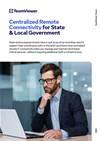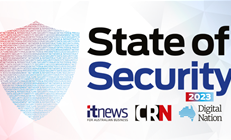The pandemic may have driven widespread digital change but its digital transformation has been temporary, a University of Queensland Business School (UQBS) academic has argued in recounting the challenges the school faced adapting to border closures that trapped 75 percent of its students overseas.

The national border closures were initially expected to be short-lived – but as the academic year began and weeks dragged into months, years, UQBS was forced to completely reinvent its computing architecture.
“Everyone went home in early 2020 and said they would be back for the first week of uni,” Dr Micheal Axelsen, senior lecturer for business information systems within UQBS, told the recent ISACA Oceania 2022 conference.
“Because we’re very good analytical people and we can work out how things can go really badly, we planned for the worst-case scenario – and that did happen, with 75 percent of our students overseas.”
“We had to rearrange everything.”
UQBS went into reactive mode, acting quickly to figure out how they could continue to keep 2000 students and 170 staff connected well enough to continue delivering the school’s 200 different courses.
The complexities of group assignments meant they went “out the window”, he said, while moving invigilated exams online “was a real struggle”.
Unlike many corporates, UQBS couldn’t rely on VPNs to help its students and staff securely access resources and collaborate, given that they are illegal in China – where the majority of the school’s international students originate.
The inevitable combination of Zoom lectures, organisational compromise and learning flexibility helped the school drag its students through degrees but “it has been a real struggle to keep them engaged”, Axelsen said, noting that “it has just changed the way they work and the way that they think about learning and engaging.”
“We’ve had to really change what we do to go online and keep them engaged, and now we have a bunch of students who have been overseas and some have never been to Australia – which is really unfortunate when they’re graduating.”
And while the pandemic forced many companies to accelerate digital transformation efforts that were already in place, Axelsen drew a distinction between digital change – rushing to accommodate rapidly changing circumstances by brushing up on cybersecurity and modifying governance structures – and digital transformation, which is more of a journey towards a new operating state.
The changes we made were to make things work, and we had to just suck it and see – versus transformation where it’s a lot more planned.”
“We didn’t have the luxury of planning,” he continued. “We were notoriously bad at remote learning, and we suddenly had to do everything remotely.”
Yet while “digital change has happened”, Axelsen said, “I don’t think digital transformation has taken.”
“Transformation needs to be sticky: it needs to stay and to be sustainable. But we now need to unwind some of that back to a new equilibrium for us going into the future.”
Maintaining customer service in tough times
The challenges UQBS faced were by no means unique – but as an increasingly difficult economic environment forces organisations to review their transformations, business executives are prioritising their spend to maintain funding for customer experience initiatives.
It's a nuanced challenge that reflects the expectations on CFOs that are defying pressure to cut costs, with a recent Gartner survey finding that 72 percent of CFOs plan to maintain customer service and support (CSS) spending and 21 per cent saying they are actually going to increase their CSS spending, despite economic doldrums elsewhere.
“In response to inflation, supply chain disruptions, and a tight labour market, CFOs will make tradeoffs in spending that affect CSS leaders,” Gartner CSS practice director Sarah Dibble said, flagging the ongoing funding support for digital initiatives as a “bright spot” for customer organisations that are being prioritised over business areas like real estate, facilities management, and finance.
Customer-service innovation, it is clear, is seen as critical to maintaining financial performance through the current difficult times – as are digital innovations, like customer self service, that can reduce the cost per contact and improve crucial profit margins.
With analysts noting that many customer experience (CX) initiatives are only focused on influencing customer buying decisions – but do little to map customer ‘personas’ by capturing data about their behaviour and loyalty post-purchase – successfully delivering data-driven initiatives requires the collection and processing of ever larger volumes of data.
Once collected, Gartner has noted, this data must be used to feed four key pillars of technology innovation that enable companies to innovate – including getting connected, process orchestration, knowledge and insight, and resource management.
“Efforts to increase the use of digital channels and improve automation rates using analytics are driving customer service technology spending, despite economic headwinds,” Gartner VP analyst Drew Kraus explained.
That was seeing an increasing focus on data-driven retail innovations such as augmented reality for customer support; video contact centres; AI-based chatbots; customer data platforms that unify customer data from multiple channels; and workforce engagement management (WEM) solutions that support the experience of the customer-service workforce.
“Automating interactions in the enterprise has tremendous business impact that cannot be understated,” Kraus added. “The emergence of sophisticated AI voice capabilities has made large-scale call centre automation viable, with huge potential for savings and positive CX.”
For people-intensive organisations trying to get back to something resembling their pre-pandemic normal, however, such automation can’t replace existing processes completely.
Ultimately, Axelsen said, the balance of new and old technologies would shift over time and settle somewhere in-between.
“You don’t become a caterpillar that becomes a butterfly that goes back to being a caterpillar,” he said. “Transformation means you’re not going back, and I have a feeling that in business there are a bunch of people that want to go back to how things were.”
“We’ll claw back a bit, but people don’t learn like that anymore. The genie’s out of the bottle, and we’re going to need to adopt and adapt.”
















